 Parallel to the introduction of physical practice or “exercising” or, in some places, “gymnastics”, later on “physical education”, as a regular subject into the curricula (in the Austro-Hungarian empire in 1869) and to the emergence of a large number of societies for exercising and sports activities in the 19th and 20th centuries, the question of the professional field and professionals arose. In schools, the problem was solved with public professional courses (the first one was held in Vienna in 1871). Civil society, however, organized specialist professional courses for instructors. In Slovenia, such courses were introduced by Viktor Murnik in the mid-1890s within the framework of the Sokol gymnastic society.
Parallel to the introduction of physical practice or “exercising” or, in some places, “gymnastics”, later on “physical education”, as a regular subject into the curricula (in the Austro-Hungarian empire in 1869) and to the emergence of a large number of societies for exercising and sports activities in the 19th and 20th centuries, the question of the professional field and professionals arose. In schools, the problem was solved with public professional courses (the first one was held in Vienna in 1871). Civil society, however, organized specialist professional courses for instructors. In Slovenia, such courses were introduced by Viktor Murnik in the mid-1890s within the framework of the Sokol gymnastic society.
When the Austro-Hungarian empire disintegrated and when the Yugoslav state was founded, the Slovene elements were introduced into schools and “physical education” was introduced according to the Sokol gymnastic society system. The education of professionals needed in schools and in practice was based on the Sokol professional courses. In the 1930s, the Ministry of Physical Education of the Nation established the College for Physical Education in Belgrade, which began working in 1938. Parallel to that, Drago Ulaga, a graduate of the Berlin Higher School for Physical Education, prepared plans for the study of physical education within the Ljubljana Faculty of Arts shortly before World War II, but the attack on Yugoslavia in April 1941 and World War II interrupted the initiatives.
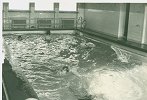 With the revival of physical education after World War II, the need for professional education and organization of either school or chair emerged again. In November 1946, the Institute for Physical Culture with the seat in Tabor in Ljubljana was established in Slovenia, its aim being “to educate professionals for schools, societies of physical culture and other institutions and to make scientific research into the issues of physical education”. In the following school years, a one-year course was reorganized in accordance with the state guidelines to become a three-year and later on a four-year secondary school course. The study took place in Belgrade at the State Institute for Physical Culture. Since in the decade following World War II, the demand for suitable college or higher school education of teachers working in schools increased, which also touched upon the problems of physical education teachers, the idea concerning a domestic college came into existence. In November 1953, the Institute for Physical Education was established in Ljubljana, with the status of a college. The tasks of the Institute were “the education of highly qualified physical education teachers as well as the scientific study of all the issues of physical education and the help offered to physical education organizations in making progress”. The study comprised six semesters and was organized in Tabor and in some other places. In March 1956, the Institute was renamed College of Physical Education and a dancing school also became part of it.
With the revival of physical education after World War II, the need for professional education and organization of either school or chair emerged again. In November 1946, the Institute for Physical Culture with the seat in Tabor in Ljubljana was established in Slovenia, its aim being “to educate professionals for schools, societies of physical culture and other institutions and to make scientific research into the issues of physical education”. In the following school years, a one-year course was reorganized in accordance with the state guidelines to become a three-year and later on a four-year secondary school course. The study took place in Belgrade at the State Institute for Physical Culture. Since in the decade following World War II, the demand for suitable college or higher school education of teachers working in schools increased, which also touched upon the problems of physical education teachers, the idea concerning a domestic college came into existence. In November 1953, the Institute for Physical Education was established in Ljubljana, with the status of a college. The tasks of the Institute were “the education of highly qualified physical education teachers as well as the scientific study of all the issues of physical education and the help offered to physical education organizations in making progress”. The study comprised six semesters and was organized in Tabor and in some other places. In March 1956, the Institute was renamed College of Physical Education and a dancing school also became part of it.
 An important professional and research step forward was when the College for Physical Education developed into the Higher School for Physical Culture in July 1960. The task was “to prepare highly qualified experts for the entire area of physical culture, particularly for the needs of schools and organizations for physical education” and “to organize and advance scientific work and educate professionals in the field of physical education”. In 1964, the Higher School for Physical Culture obtained new, more suitable facilities in Kodeljevo. In new working conditions and in accordance with the then guidelines of higher education, a two-cycle study that was upgraded with a master’s degree in 1964 and later with a PhD degree was organized. Regarding the then reforms in the physical culture and the introduction of fields and forms of physical education, recreation and sport, “the aim and the purpose of the study was to educate physical education teachers for educational organizations, sports societies, organizations of associated labour, working communities, local communities and tourism”.
An important professional and research step forward was when the College for Physical Education developed into the Higher School for Physical Culture in July 1960. The task was “to prepare highly qualified experts for the entire area of physical culture, particularly for the needs of schools and organizations for physical education” and “to organize and advance scientific work and educate professionals in the field of physical education”. In 1964, the Higher School for Physical Culture obtained new, more suitable facilities in Kodeljevo. In new working conditions and in accordance with the then guidelines of higher education, a two-cycle study that was upgraded with a master’s degree in 1964 and later with a PhD degree was organized. Regarding the then reforms in the physical culture and the introduction of fields and forms of physical education, recreation and sport, “the aim and the purpose of the study was to educate physical education teachers for educational organizations, sports societies, organizations of associated labour, working communities, local communities and tourism”.
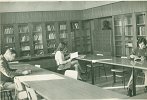 The Higher School for Physical Culture became part of the University of Ljubljana in 1975. In 1982, it initiated a procedure on the basis of the past academic and research development to be renamed Faculty of Physical Culture. In March 1982, the University Council supported “the endeavours of the Higher School for Physical Culture to be renamed the Faculty of Physical Culture” on the basis of the “assessment of ... the development” and “the achievements in the pedagogical as well as in research work” as well as on the basis of the reputation gained at home and internationally. In 1990, the Faculty was renamed the Faculty of Sport and has been known under this name ever since.
The Higher School for Physical Culture became part of the University of Ljubljana in 1975. In 1982, it initiated a procedure on the basis of the past academic and research development to be renamed Faculty of Physical Culture. In March 1982, the University Council supported “the endeavours of the Higher School for Physical Culture to be renamed the Faculty of Physical Culture” on the basis of the “assessment of ... the development” and “the achievements in the pedagogical as well as in research work” as well as on the basis of the reputation gained at home and internationally. In 1990, the Faculty was renamed the Faculty of Sport and has been known under this name ever since.








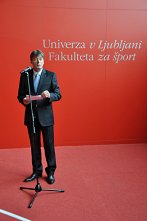

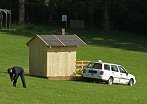




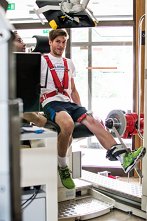




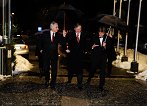

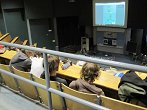

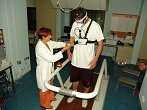
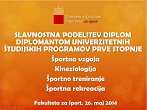




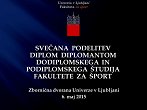




.png)